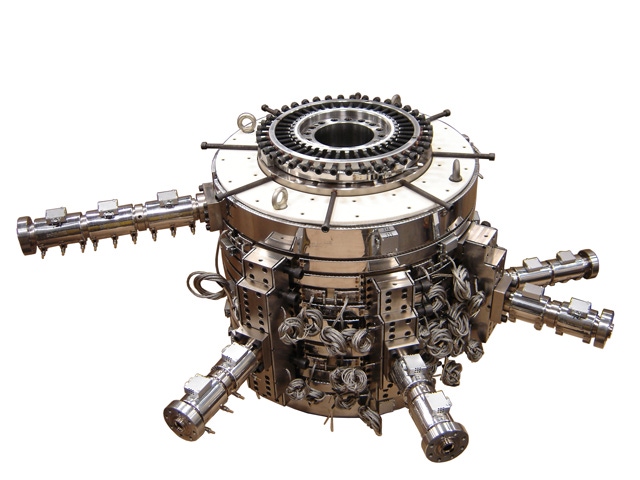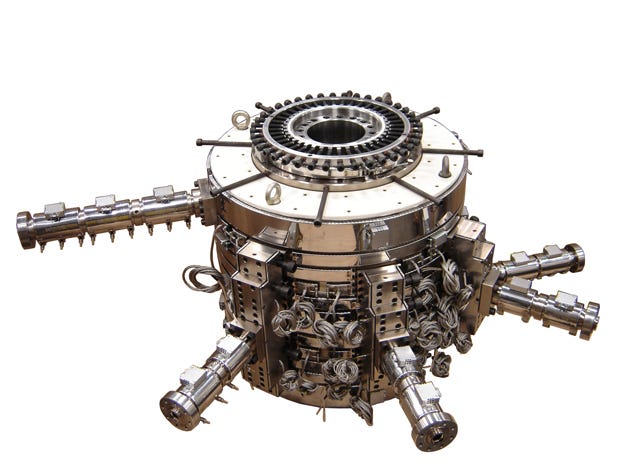Compact extrusion die from DSS punches above its weight
A compact modular extrusion die for blown film and tubing applications from Dual Spiral Systems (DSS; Mississauga, ON, Canada) is 50% shorter and lighter compared with the company's traditional multilayer system. Other advantages of the DSS Compact Coex die include faster heat-up time, lower residence time, faster purges and material changeovers and a 60% reduction in energy consumption, according to DSS.
March 11, 2015

A compact modular extrusion die for blown film and tubing applications from Dual Spiral Systems (DSS; Mississauga, ON, Canada) is 50% shorter and lighter compared with the company's traditional multilayer system. Other advantages of the DSS Compact Coex die include faster heat-up time, lower residence time, faster purges and material changeovers and a 60% reduction in energy consumption, according to DSS.
The company recently manufactured a 22-layer DSS Compact Coex die capable of processing 22 different resin layers. The die is set up with five extruders, with extruders A and E feeding two layers each, while extruders B, C and D each feed six layers. The die can be arranged with any combination of extruder-to-layer configurations.
A traditional 22-layer die would weigh 7400 kg and measure 1610 mm in height. By comparison, the compact die weighs 3865 kg and is 819 mm high. Moreover, total heater wattage for the traditional die is 173,000 W; the compact die uses 68,000 W.

Layer splitting technology
The DSS stackable extrusion die is unique in that it divides polymer flow from the extruder into two layers, thus doubling the number of layers in the die, says DSS. Layer division reportedly substantially reduces film thickness deviation, increases output rates and makes film twice as strong compared with dies with single film layers.
Unlike micro-layer dies, which are limited to processing only a few different materials, DSS dies can process as many different materials as there are layers within the die, taking advantage of the properties of each material, says the company. Each layer is a unique flow distributor that processes a discrete layer within the die. The DSS is available in two to 44 layers and 25 to 1,150 mm lip sizes.
DSS says that its layer splitting/doubling increases film strength through the "plywood effect," meaning that a two-ply film will be stronger than a single-ply film of the same overall thickness. The same premise applies to gas barrier properties. As the number of layers increases, the number of interfaces between barrier layers also increases, thereby achieving a higher overall barrier property of the layer-split film.
Barrier properties of split barrier layer films will always surpass those of single-barrier coex films with the same material and same total thickness of barrier resin layer. That is because the energy required for oxygen penetration into the barrier layer is a different value (higher) compared with the energy required for transmission through the barrier layer. As a result, each layer interface affects barrier properties, resulting in a lower gas permeation rate for layer-split films.
Layer splitting also enables down gauging, as thinner films with the same or better properties of thicker films can be produced.
DSS has conducted research on thickness deviation showing that barrier films produced with coex dies achieve less than 2% 2 sigma variation without a thickness correction device. The study is available to interested parties.
About the Author(s)
You May Also Like




